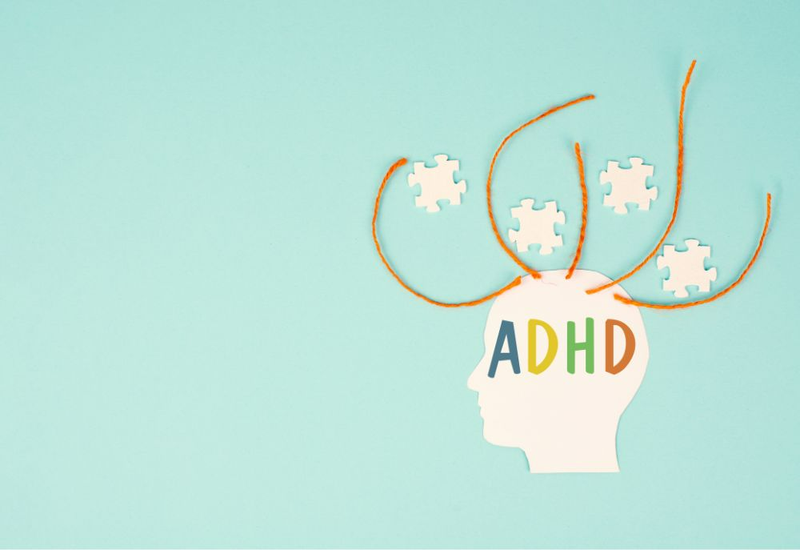A child who is constantly moving, talking a lot and cannot sit still is sometimes not because they are naughty. On the other hand, an adult who cannot concentrate on completing a task easily is not because he is irresponsible or lacks concentration. This may be a manifestation of the types of hyperactivity commonly found in children and adults.
Hyperactivity is a very common neurodevelopmental disorder that affects attention, concentration and control of human behavior. To learn more about common types of hyperactivity, please read the article below.
What is hyperactivity?
Hyperactivity, also known as Attention Deficit Hyperactivity Disorder – ADHD, is a common neurodevelopmental disorder that affects the ability to pay attention, concentrate and control human behavior. The manifestations of hyperactivity are often most obvious in children and can last into adulthood. Anyone can develop ADHD, but it is more common in men.
Symptoms of ADHD appear between the ages of 3 and 6, and the average age of diagnosis is 7 years old. ADHD can also occur in adults, but the rate is lower and is currently increasing.
The exact cause of ADHD is still unknown. However, some people believe that certain factors may be related to ADHD, such as:
- Children eat too much sugar.
- Children live in a chaotic environment or watch too much TV.
- ADHD can also be genetic.
- Other factors: Exposure to toxins such as lead, alcohol and tobacco use during pregnancy, or premature birth, low birth weight, or traumatic brain injury.

Attention deficit hyperactivity disorder can occur in both adults and children.
Common types of hyperactivity
ADHD is divided into 3 main types: inattentive type, hyperactive type and combined type. Each type of hyperactivity will have different characteristics and characteristics, specific to each type. Abnormal behaviors in children often manifest in the following ways:
Inattentive type of hyperactivity
Inattentive type of hyperactivity will cause the patient to experience many inattentive symptoms. Specifically, the patient will often:
- Easily distracted, reduced attention, lack of concentration, so often miss details and quickly get bored.
- Unable to complete a single task easily such as reading, writing, …
- Or have difficulty learning new information and rearranging thoughts.
- Children often lose necessary items such as papers, pens, rulers, …
- Children lack concentration, do not listen to others.
- Children have symptoms similar to daydreaming and move slower than other children.
- The ability to process information is slower and less accurate than other children.
- Children may have some problems even when following instructions.
Inattentive hyperactivity is more common in girls than boys.
Hyperactivity-type hyperactivity
This type of hyperactivity is characterized by symptoms of excessive hyperactivity and impulsiveness. Patients with this type do not have many signs of inattention and the symptoms are not as obvious as other symptoms:
- Always in a state of restlessness, squirming.
- Children often have difficulty sitting still and talk continuously.
- Children touch or play with objects even when not allowed.
- Children cannot easily participate in activities that require quiet.
- Children are impatient and constantly on the move.
- Children have naughty, defiant actions and do not think about the consequences of those actions.
- Children may give answers or comments that are not appropriate to the situation.
- Children disrupt the classroom, making learning more difficult for themselves and other students.
Boys are more likely to have hyperactivity than girls.

For the most part, boys are more hyperactive than girls.
Combined Hyperactivity
Combined hyperactivity not only has symptoms of inattention but also hyperactive behaviors that make people around tired and stressed. The combination of these two types will be clearly expressed. Most patients will have inattentive or hyperactive behavior to some extent. The behaviors often occur frequently, affecting activities in daily life at school, at home, at work, at work or in social situations.
Most ADHD in children is the combined type and this type is also more common in boys. Over time, the symptoms of the disease can change, so the type of ADHD that the patient has can also change.
Can ADHD be cured?
Although ADHD cannot be completely cured or prevented, there are still some treatments that can help improve and increase the quality of life and reduce symptoms.
These measures can include using medication, psychotherapy or changing lifestyle habits, receiving help from experts, etc. In addition, to prevent the disease, build healthy living habits, pregnant mothers should stay away from cigarette smoke and do not abuse stimulants during pregnancy.
Most children diagnosed with this syndrome no longer have any symptoms of the disease when they are over 20 years old. However, there are still many cases where symptoms of the disease still exist and affect the quality of life. In these cases, it may be necessary to intervene with medication and combined therapies to control the disease well.

Lifestyle changes to improve ADHD symptoms
So reading up to here, surely readers have understood clearly about the types of hyperactivity commonly found in children and adults. Build for yourself and your children healthy living habits to minimize the risk of unwanted diseases that affect the quality of life.





